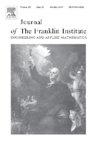自动驾驶汽车路径跟踪的无模型滑模控制
IF 4.2
3区 计算机科学
Q2 AUTOMATION & CONTROL SYSTEMS
Journal of The Franklin Institute-engineering and Applied Mathematics
Pub Date : 2025-06-21
DOI:10.1016/j.jfranklin.2025.107806
引用次数: 0
摘要
本文解决了自动驾驶车辆路径跟踪任务中参数不确定性和干扰的挑战。采用一种新的期望偏航角函数来增强欠驱动车辆的路径跟踪,从而简化了控制器的设计,而不是直接收敛路径跟踪误差。实验证明,当偏航角与期望偏航角对齐时,轨迹跟踪误差减小为零。基于系统模型和控制目标,提出了一种复合无模型滑模控制方案。该策略采用非奇异终端滑模控制律来稳定控制误差。此外,在控制器中加入高阶快速终端滑模观测器来解决系统参数的不确定性和外部干扰,并利用估计值进行控制。通过这种组合,这种方法确保了跟踪精度,而不需要了解车辆参数,并提供了强大的应用程序,最终实现无模型控制。同时,利用李雅普诺夫理论证明了封闭系统的稳定性。最后,设计了各种工况来验证所提控制策略的鲁棒性,并对不同的控制方法进行了比较,以突出所提控制策略的优越性。本文章由计算机程序翻译,如有差异,请以英文原文为准。
Model-free sliding mode control for path following in autonomous vehicle
This article addresses the challenges of parameter uncertainty and disturbance in the path-following task of autonomous vehicles. Instead of directly converging the path-following errors, a novel desired yaw angle function is introduced to enhance path tracking in underactuated vehicles, thereby simplifying the controller design. It is proven that the path tracking errors diminish to zero as the yaw angle aligns with the desired yaw angle. Based on the system model and control objectives, a composite model-free sliding mode control scheme is proposed. This strategy employs a non-singular terminal sliding mode control law to stabilize the control error. Furthermore, a high-order fast terminal sliding mode observer is incorporated to address system parameter uncertainty and external disturbance, with the estimated values utilized in the proposed controller. With this combination, this approach ensures tracking precision without requiring vehicle parameter knowledge and offers robust application, ultimately realizing model-free control. Meanwhile, the stability of the closed system is proven using Lyapunov theory. Finally, various operating conditions are designed to verify the robustness, and different control methods are compared to highlight the superiority of the proposed control strategy.
求助全文
通过发布文献求助,成功后即可免费获取论文全文。
去求助
来源期刊
CiteScore
7.30
自引率
14.60%
发文量
586
审稿时长
6.9 months
期刊介绍:
The Journal of The Franklin Institute has an established reputation for publishing high-quality papers in the field of engineering and applied mathematics. Its current focus is on control systems, complex networks and dynamic systems, signal processing and communications and their applications. All submitted papers are peer-reviewed. The Journal will publish original research papers and research review papers of substance. Papers and special focus issues are judged upon possible lasting value, which has been and continues to be the strength of the Journal of The Franklin Institute.

 求助内容:
求助内容: 应助结果提醒方式:
应助结果提醒方式:


